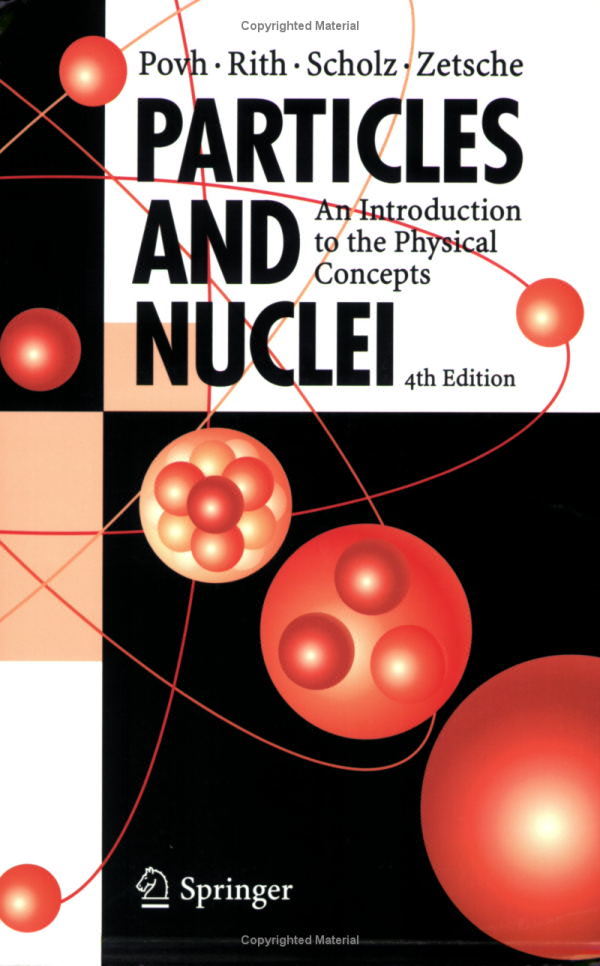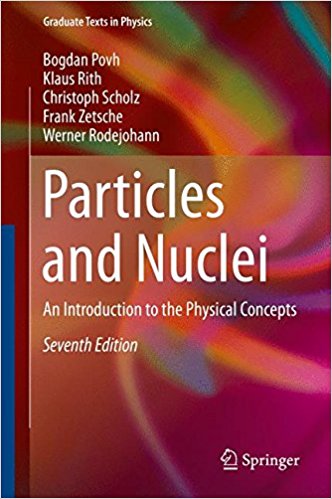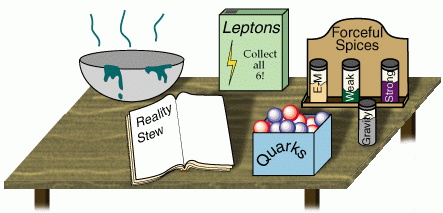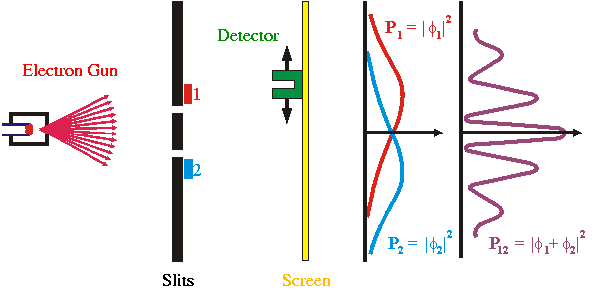 |
More Details |
 |
Homework |
 |
More Details |
 |
Homework |
 |
or |  |
Look inside the Book! (7th edition)
The aim of this course is to uncover the substructure of atomic nuclei and nucleons by focusing on the underlying principles, ideas, and experiments.

We will not only answer questions addressing the size, shape, building blocks,
excitation and decay of nuclei and nucleons, but will also try to embed
them in a more general view and understanding of physics. While learning the
basic ingredients of nuclear and particle physics we will see that
similar aspects of symmetries are valid not only at small but at all
scales, thus we may also find the answer to the question, why the
radius of rain drops is always smaller than 2.25 mm.

In other lectures we have to talk about the uncertainty relations and
interferences to establish a deeper, yet still easy, way of understanding
form factors in position as well as in momentum space. And if you believe
that you have already understood the double slit experiment you will get the
chance to explain why the light of two different stars light years apart
from each other can generate an interference pattern that is measurable
here on earth.

As a last example, while introducing the relativistic kinematics that
is needed for experimental nuclear and particle physics, you will learn,
how to calculate the temperature of the cosmic background radiation
from the mass of the first excited state of the nucleon and the mass
of the highest energetic protons ever seen.
In our laboratory hours we will focus on two experiments and the needed equipment to carry them out. These two are measuring cosmic rays and a series of distributions to experience how statistics influences life or the results of measurements. Unfortunately, there is no direct translation of a well known German saying "Ein Unglück kommt selten allein", which would have been a nice way of telling you that you have to learn about generalized s-fold interval distributions, but one way or the other you will see that uncorrelated disasters most likely happen at the same time, which might make you question whether it is really your choice to join the course.
Learning outcomes: Upon successful completion of this course, you should know about the importance of phase space cells and uncertainty relations, and should have established a basic knowledge on the global properties of nuclei, on radioactivity, on scattering cross sections, on the structure of nuclei and nucleons down to the level of quarks and gluons, on experimental techniques in nuclear physics, ... or in short, you should be knowledgeable about what we have discussed in class.
Whenever you are not on track and cannot digest what we have done you should ask me, discuss with your peers, and Look inside the Book (4th edition)! You may also visit the Student Sucess Center and/or arrange for Peer Tutoring also offered for our course through the Student Success Center, call 803-777-1000 or email tutoring@sc.edu with additional questions.
Prerequisites: A grade of C or better in PHYS 502 or contact me.